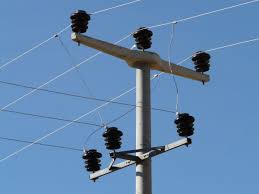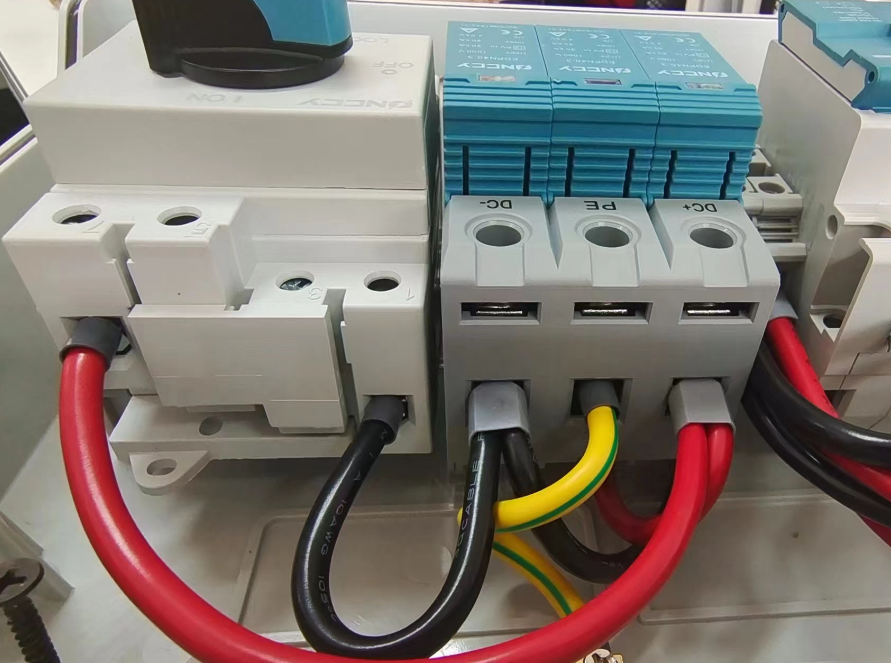Isolators enhance safety, prevent electrical faults, stabilize systems, extend equipment lifespan, and ensure compliance with safety standards.
Enhanced Safety During Maintenance
The isolator plays an important role in enabling safe maintenance of electrical equipments. Circuit breakers are meant to protect circuits, while isolators isolate the part of the electrical circuit that needs maintenance and there should be no current flowing to it. In this way, it can provide a safe working regulated environment, thus reducing the chances of any type of accidental injury or casualties due to electric current.
Keys to Pharmaceutical Safety
The isolators have visible breaking points that are turned off so it indicates that the circuit has been isolated and therefore can be worked on safely by the maintenance personnel. It is an essential characteristic in high voltage environments where a visual observation is required to sign for the circuit to be open, to comply with safety standards.
What Are Lockout/ Tagout Procedures
When maintenance is performed, Professionals execute lockout/tagout procedures to lock the isolators in the off position. In industrial settings where it is common for multiple workers to be working on electrical systems, these procedures are especially important as they help prevent a technician from accidentally re-energizing a system that is still being serviced. Isolators are instrumental in this role since they offer a physical break that can then be locked out to verify that no energy is transferable beyond the point of isolation.
Preventative Maintenance and System Checks
Isolators enable techniciains to perform preventive maintenance without concern for exposure to live ciricuits. Isolators can be used to safely check and repair systems during routine inspections where no current should flow. This not only shields the workers but also enables detection of potential electrical faults at an earlier stage so that these can be rectified without the risk of an energized system.

Prevention of Electrical Arcs and Short Circuits
Isolators are key components of preventing light arcs, and preventing short circuiting, which are major contributors to damaged equipment and on-site accidents. Isolators cut power completely, in a managed environment, with no risk of unintended electrical discharge.
Mechanism of Arc Prevention
Isolation is just that involves a gap in the circuit too big for electricity to jump across still giving potential for an electrical arc which would then lead to electric shock, by use of a isolator the potential to create an electrical arc is removed. In so doing, the electrical circuit is interrupted, preventing the arc current reluctance to jump across a small gap or to break path that is the insulator.
Integration with Circuit Protection Systems
Isolators are generally used along with other circuit protection devices such as fuses and circuit breakers. Circuit breakers are used to automatically open the circuit when the system is going for overload or short circuit whereas isolators are operated manually to ensure the complete isolation of the system. The manual control will help keep the circuit open in case automated systems fail due to the override, thus providing a fail-safe mechanism.
Reduction in Equipment Downtime
Isolators help eliminate the surge and short circuit that can lead to instant equipment termination and result in downtime. According to IT research firms, unplanned downtime can cost the industrial sector more than $260,000 an hour. Isolators help cut down on these botched interruptions and keep things running, which contributes to operational continuity and financial stability.
Standards and Regulatory Compliance
Isolators can be used to meet International Safety standards like National Electrical Code (NEC) and Occupational Safety and Health Administration (OSHA) regulations. For protection against arcs and shorts, these standards require the use of devices that can deliver a visible means of separation in the electrical system with a lockable disconnect point.
Improved System Stability
They play crucial role to make electrical systems more stable because they help to manage power sections more controlled way. They enable subsystems to be taken offline, thus making it possible to support everything running, which is important for both routine maintenance and emergent conditions.
Isolation of Fault Zones
Isolators can disable problematic parts of the system in no time and keep problems from spreading to other sections of that system. Isolators limit the chance of faults cascading throughout the system by containing them nearby. s travelling up a long way to get so if we can steer it to the best place quickly, e.g., isolate a fault to save thousands of customers losing power to something like a hospital in large-scale power networks, then we reduce that cost-s we are helping the consumer too.
Facilitating System Upgrades and Expansion
Isolators are used when the system needs an upgrade or a new additive to the electrical systems for which integrators provide a safe way to introduce new components to the existing network without disturbing the operations. This integration is what makes the system stable, and hence possible upgrade the system without a full stop.
Enhancing Operational Flexibility
Using Isolators you can isolate sections of a system that maybe off while the whole system is up. The benefits are extra notable in complex industrial environments that consist of dozens of processes with each process having different electrical requirements. This means that systems can be more efficient operations since they can provide power-consuming system components with power, or shut off power to power-consuming components.
Non-Invasive Scheduled Maintenance
By implementing isolators, preventive maintenance does not have to result in downtime They permit selected parts of the electrical system to be active and other parts turned off securely. Statistics show that up to 45% of equipment failure rates can be lowered through the correct management of preventive maintenance, aided with isolators.

Extended Equipment Lifespan
Isolators help in increasing the life of the various electrical equipment by providing proper management of electrical loads and prevents the devices in case of power surges. Both of these functions are made possible by their ability to isolate segments of a system, and this includes both during maintenance and also for protecting electrical equipment.
Protection Against Power Surges
Propellicated as a trigger of power supplies, isolators are a valuable standard element in help of quick destroying of delicate electrical machinery. Isolators protect capacitors, microprocessors, and other parts from the strain of overvoltage because they prevent excessive voltage from reaching equipment by breaking the power supply.
Reduction in Mechanical Wear
Common wear of the mechanical type in electrical equipment are the result of the electrical contacts breaking and making on a continuous cycle. Isolators can be used reduce this wear by making sure that switches are not only opened but are fully isolated which then reduces the rate of contact erosion and therefore maintenance requirements. Isolators are proven to increase machinery operational lifespan by 30% or more according to industry studies.
Reliability is improved by Selective isolation
Isolators help in selective isolation, which means any of the isolator can be switched on or off with directly affecting the rest of the part of the electrical system. Which not only guarantees uninterrupted operations but also minimizes the possibility of random breakdowns which causes rapid degradation of the equipment of your data center.
Preventative Maintenance Assistance
Isolators make it very easy to perform preventive maintenance since they enable easy sectioning of the circuit. A targeted platform like this allows us to solve for issues before they escalate, increasing the lifespan and the reliability of our equipment.
Regulatory Compliance and Standards
In electrical systems, isolators are crucial for fulfilling multiple national and international safety standards. Their use is generally mandated by law, standard or code, which require specific electrical safety, or can result in the physical system integrity being jeopardised.
OSHA and NEC Compliant
The Occupational Safety and Health Administration (OSHA) and the National Electrical Code (NEC) which governs the United States have additional requirements for electrical safety. Isolators make it possible to fulfill the following rules and requirements as clearances for the equipment to be disconnected is necessary to make sure that maintenance and troubleshooting can be perform safety : As an end users, compliance is essential to eliminate any legal fines as well as for a safe workspace.
ISO and IEC Standards
Internationally, electrical isolation guidelines are included within the standards of the International Organization for Standardization (ISO) and the International Electrotechnical Commission (IEC). I.S.301 Standards are a set of standards to which isolators used in electrical installations conform to ensure they meet international criteria for safety and performance for uniformity of safety practices across borders.
Contributing to System Certification
Thus, electrical systems often require to go through the certification process with very strict tests to guarantee safety compliance. They help these certifications by isolating allowing to safely isolate systems, which is important to acomplish in order to pass the Security audits.
Expanding Insurance and Liability Coverage
The use of isolators can also impact a company's ISO (International Standard for Organization) electrical safety insurance policies as well. Typically insurers offer more favorable terms or lower premiums to firms who maintain high safety requirements that involve the use of isolators. Added to the above is the fact that companies using isolators to evidence compliance with safety regulations can often negotiate liability premium reductions of up to 20%.
